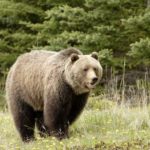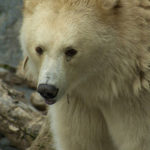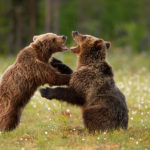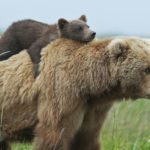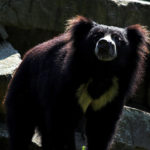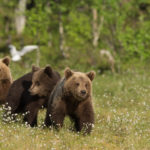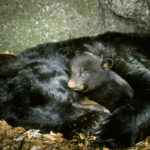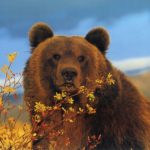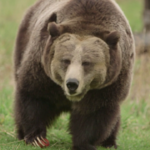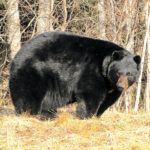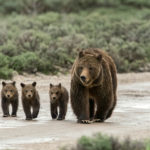27 interesting and fun facts about the brown bear
 Smart, strong, hardy and very cunning, brown bears reign supreme in the forests. For them, only humans are dangerous, but different forest dwellers prefer to stay away from clubfoot. The behavior of brown bears can be quite unpredictable, and you never know what he will do – he will peacefully sniff what he wants and will leave, or he will attack immediately.
Smart, strong, hardy and very cunning, brown bears reign supreme in the forests. For them, only humans are dangerous, but different forest dwellers prefer to stay away from clubfoot. The behavior of brown bears can be quite unpredictable, and you never know what he will do – he will peacefully sniff what he wants and will leave, or he will attack immediately.
The hibernation of these animals slows down to 8-10 beats per minute in these animals.
In fact, brown bears can be of different colors, from light brown to almost black.
About a third of the global brown bear population lives in North America. The remaining 70% is in Eurasia.
Clubfoot bears are very jealous of their lands. One adult bear can pacify up to 400 square kilometers.
In old age, brown bears often lose their teeth, since it becomes more difficult for them to catch prey, and they feed mainly on plant foods. It is harder, and her teeth wear off faster.
The memory of the owner of the forest is magnificent. He always remembers places rich in berries and mushrooms, and goes around them from time to time, collecting crops.
These animals are found even in hot climates, including in the Middle East, in desert and hot countries like Syria and Lebanon.
If brown bears fight, they usually do not cause each other serious times. However, competing for the female during the breeding season, males can cripple each other and even kill.
Their intelligence is very highly developed. Some individuals, for example, can easily throw a stone or a stick into a hunting trap to neutralize it.
In the Far East, brown bears sometimes encounter Amur tigers. If they enter the fray, it is impossible to predict who will emerge victorious from it.
If fasting times come, the brown bear does not disdain even carrion.
The front legs of these animals are shorter than the hind legs, so it is easier for them to climb the slope than to descend from it.
The duration of hibernation in a brown bear depends on the climate in its habitat. It usually lasts from three to six months.
In favorable conditions, for example, in a zoo or nursery, a brown bear can live up to 50-60 years. In captivity, they live on average half as much. And growth in young animals continues until they reach about 10 years of age.
They swim great. A river or a gulf with a width of five kilometers is not a serious obstacle for them. Polar bears, however, swim even better.
By calorie content, bear milk is only slightly inferior to elk, and three times superior to cow.
The brown bear changes the den only if it has been destroyed. Otherwise, he lives in the same place all his life.
Before hibernating, he carefully eats away, gaining up to two hundred extra pounds of weight.
The intimidating claws of these animals can grow to a length of 12 centimeters.
The brown bear is the largest inhabitant of the Russian middle zone.
When walking or running, he rearranges first two legs (front and back) on one side of the body, and then on the other. Because of this, they call him clubfoot.
The weight of a newborn teddy bear rarely exceeds a pound. Human babies, for example, weigh 5-7 times more at birth.
Only young brown bears climb trees, as branches and branches are not able to support the weight of an adult animal.
If necessary, the brown bear can accelerate to a speed of 60 km / h.
The largest brown bears weigh up to 500-600 kg with a body length of more than two meters.
They mark their land not with urine, like many other animals, but with claws, tearing off the bark from the bottom of the trees.
Animal food accounts for only about 25% of the total brown bear ration. The rest is mushrooms and plant foods.
